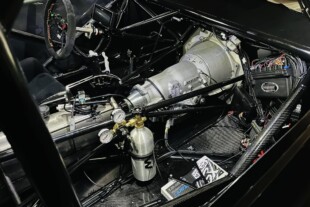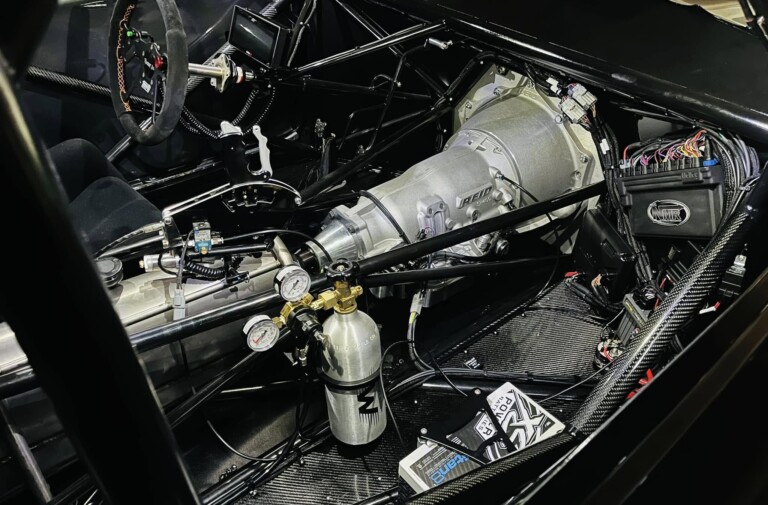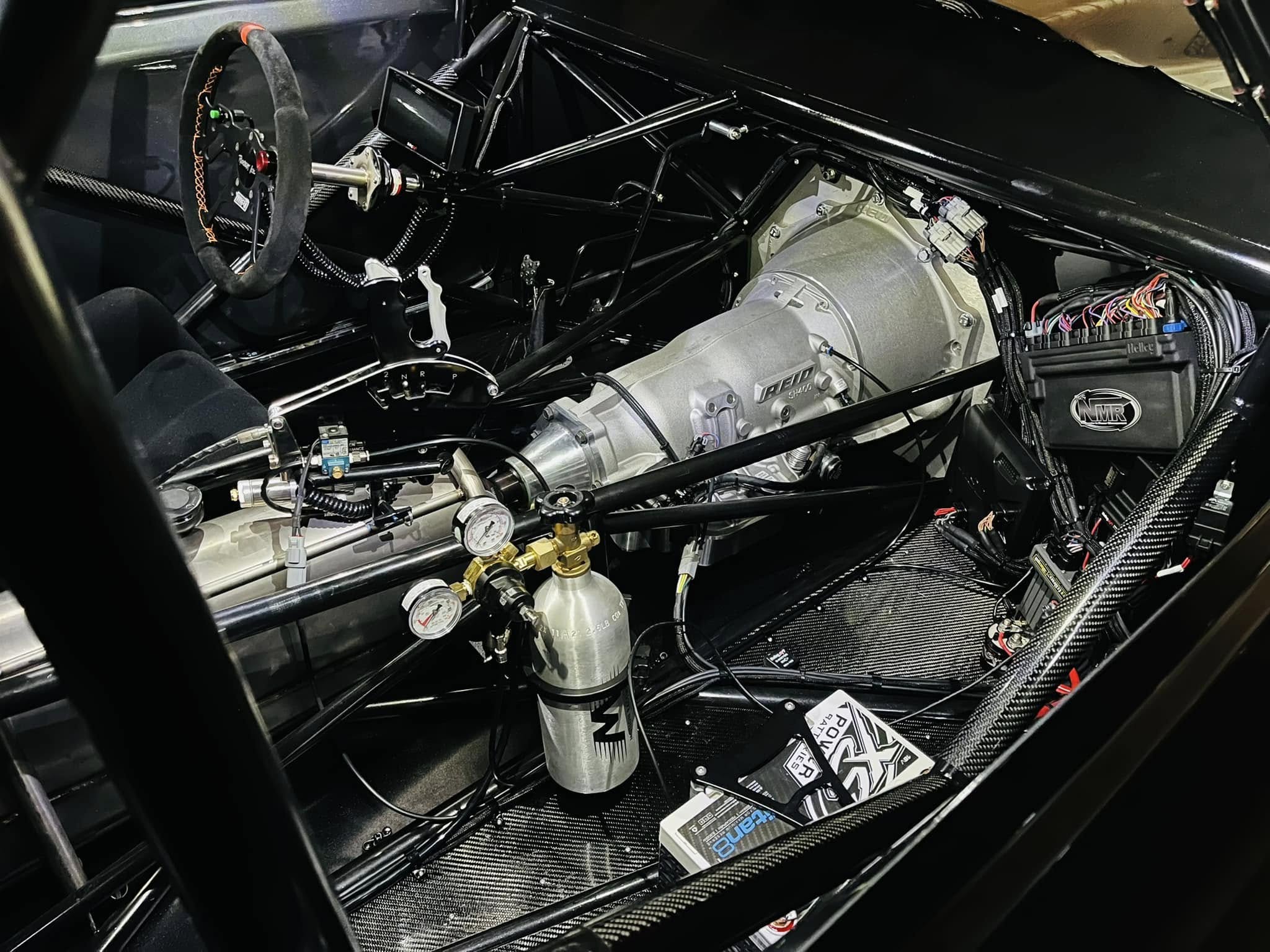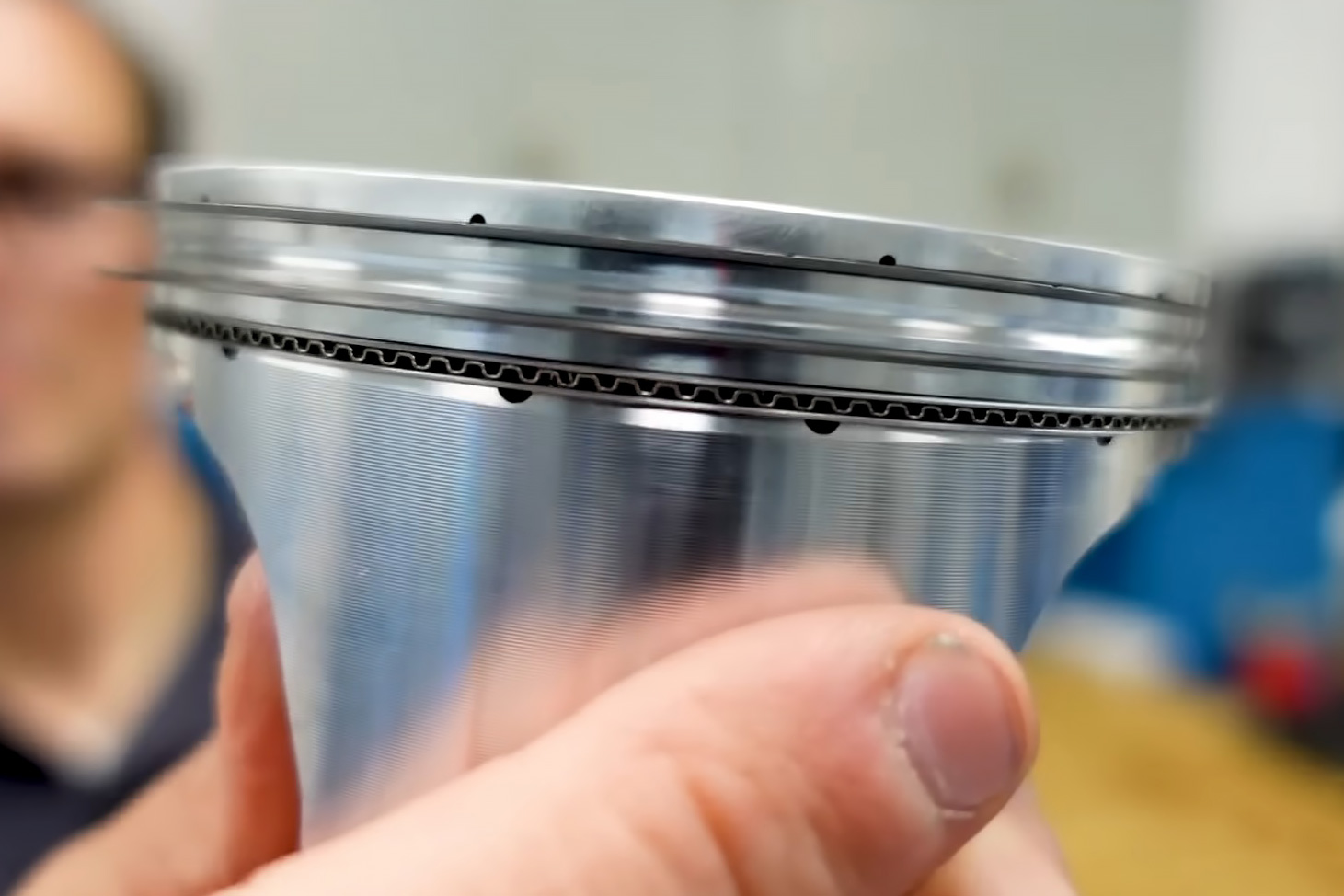 Staying true to a historical marque’s power source is certainly a noble undertaking, albeit an objective easier conceived than executed — especially when trying to source performance parts for a Studebaker.
Staying true to a historical marque’s power source is certainly a noble undertaking, albeit an objective easier conceived than executed — especially when trying to source performance parts for a Studebaker.
David Parris recently purchased the famed “Burke Avanti,” a multiple record-setting 1963 Studebaker that spent most of its life on the Bonneville Salt Flat or the dry lakes of El Mirage — that is when it wasn’t languishing in the back of a garage or some field, waiting for the next owner to revive its land-speed heritage.

The dyno headers are on loan from Jeff Rice’s ’53 Studebaker drag car. Tests were also run with manifolds adapted to the R3-ported heads. Proper 3-tube step headers are currently being fabricated, and Parris has a set of custom zoomies. Note the siamesed port in the middle, and the “heat riser” tube on the headers.
Parris picked up the Avanti without an engine and, at first, considered building a Hemi — which powered the car for many of its record runs — or a big-block Chevy. Then the Studebaker community heard of the car’s pending rebirth and lobbied for loyalty.
“Several Studebaker folks contacted me and influenced me to give it a go with Studebaker power,” says Parris, who will race the car along with with his daughter and nephew. “It’s been a fun project.”
The plan was to build a “soft” 259 for ECTA events on the East Coast to help set up the car and also acclimate the youngsters to top-speed racing. Then a “killer” Studebaker race engine would be built for the salt.
The 259 was recently finished and dyno tuned at Precision Engine II in Sylvania, Georgia. The project started with a vintage truck block and bored to 3.589 inches. The decks were also squared off at 10.051 inches, and some of the webbing in the lifter valley was clearanced for roller lifters. The block was also modified to utilize a remote electric water pump, allowing water to enter at the freeze-plug locations. The stock Studebaker crankshaft was ground for a 3.2-inch stroke, keeping the displacement under 260ci, per the class rules.
The team originally ordered 13.5:1 pistons, but production delays forced them to scramble for any slug that would fit so the car could be ready for its first scheduled outing.
“My dad finally found a Mitsubishi truck piston with the right bore,” says Precision’s Jeff Ford.
Unfortunately the pistons were flat-top and resulted in an 8:1 compression ratio. But now the engine offers great potential for a supercharger upgrade. Rounding out the short block are Eagle 7-inch connecting rods and Topline rings.
The intake was fabricated from a Mopar single-plane manifold.
The heads also started out as stock pieces then welded up and sent to Nash Solanki where the ports were machined similar to Studebaker’s famous R3 head. Precision also added NASCAR-style 7mm-stem 1.875-inch intake and 1.630-inch exhaust valves and beehive springs.
“Those R3 heads are so rare,” says Ford, noting some ambitious Studebaker enthusiasts are cutting off the exhaust side and welding new plates to help raise the ports.
The custom camshaft carries a .410-inch lobe lift, and when combined with Harland Sharp 1.6:1 rocker arms results in a .656-inch valve lift.
“Everything else on the outside of the engine had to be fabricated or machined in some way,” says Ford.
The dry-sump pan is a union of a Chevy bottom and Studebaker rails. The balancer is a modified Ford unit, and the crank trigger came from a Chevy.
With the low compression the engine pulled 306 horsepower at 6,000 rpm on the dyno. Peak torque was 266 lb-ft at 5,500 rpm.
“There’s a heck of a lot left in that engine,” sums up Ford.
While the 259 helps prep the car, a turbocharged 327ci Studebaker is being built for Bonneville, and Parris has hopes of breaking one of the records the car still holds from 1979!


















